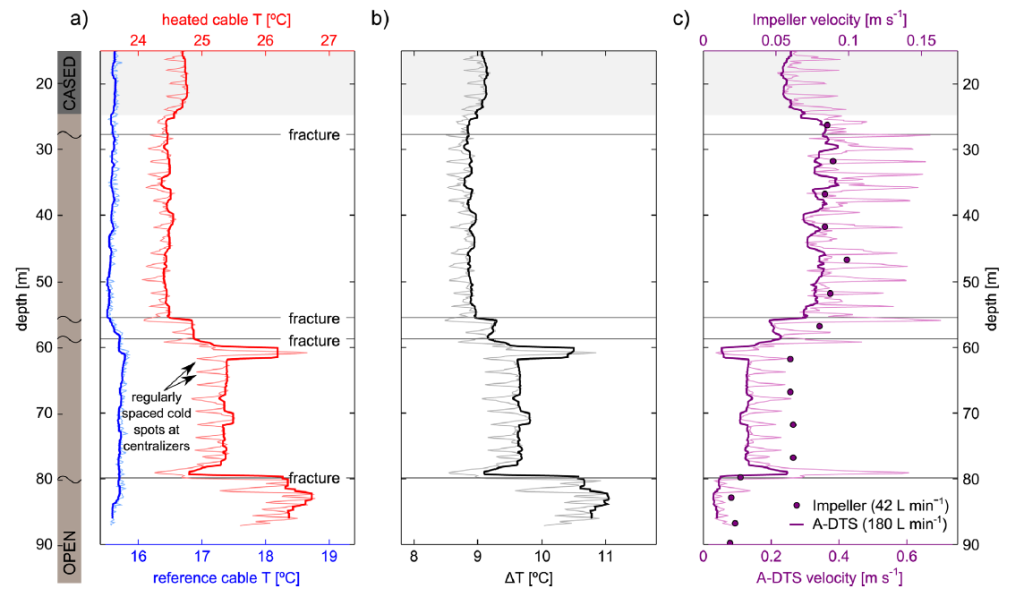Active-Distributed Temperature Sensing to continuously quantify vertical flow in boreholes
We show how a distributed borehole flowmeter can be created from armored Fiber Optic cables with the Active-Distributed Temperature Sensing (A-DTS) method. The principle is that in a flowing fluid, the difference in temperature between a heated and unheated cable is a function of the fluid velocity. We outline the physical basis of the methodology and report on the deployment of a prototype A-DTS flowmeter in a fractured rock aquifer. With this design, an increase in flow velocity from 0.01 to 0.3 m s-1 elicited a 2.5°C cooling effect. It is envisaged that with further development this method will have applications where point measurements of borehole vertical flow do not fully capture combined spatiotemporal dynamics. (T. Read1, O. Bour2, J. S. Selker3, V. F. Bense1, T. Le Borgne2, R. Hochreutener2,3, and N. Lavenant2)

(a) Reference cable and heated cable temperatures while pumping from 7 m depth at 180 L min-1 (pale lines are temporally averaged, bold lines temporally averaged with additional spatial filtering).
(b) Corresponding ΔT profile (the light line is the difference between the purely temporally averaged data, and the bold line is the difference between the combined time averaged and spatially filtered profiles).
(c) Calculated velocity profile from ΔT and equations (1–4), with measurements of the flow velocity made using an impeller flowmeter while pumping at 42 L min-1 in July 2012 for comparison.
Download: WP30_WRR_Read_Ploemeur
- School of Environmental Sciences, University of East Anglia, Norwich, UK,
- Geosciences Rennes, CNRS, University of Rennes 1, Rennes, France
- Department of Biological and Ecological Engineering, Oregon State University, Corvallis, Oregon, USA
